News Archive
Filter By
- Abyssinian ground hornbill
- Addax
- Aldabra tortoise
- Allen's swamp monkey
- Alpaca
- American alligator
- American avocet
- American bison
- American flamingo
- American wigeon
- Andean bear
- Aquatic caecilian
- Arapaima
- Asian elephant
- Asian small-clawed otter
- Asian water dragon
- Australian snake-necked turtle
- Bald eagle
- Baltimore oriole
- Barred owl
- Bearded emperor tamarin
- Beaver
- Bennett's wallaby
- Binturong
- Black-and-white ruffed lemur
- Black-crowned night heron
- Black-footed ferret
- Black-tailed prairie dog
- Black-throated blue warbler
- Blue-billed curassow
- Blue crane
- Bobcat
- Brown pelican
- Bufflehead
- California sea lion
- Canvasback
- Cedar waxwing
- Channel catfish
- Cheetah
- Chicken
- Chinese alligator
- Chinese three-striped box turtle
- Clouded leopard
- Collared brown lemur
- Common raven
- Common yellowthroat
- Corals and sea anemones (anthozoa)
- Cow
- Crocodile monitor
- Cuban crocodile
- Dama gazelle
- Degu
- Dunlin
- Eastern corn snake
- Eastern indigo snake
- Eastern newt
- Eastern red-backed salamander
- Eastern screech-owl
- Eld's deer
- Electric eel
- Emperor newt
- Fennec fox
- Fishing cat
- Gaboon viper
- Geoffroy's marmoset
- Gharial
- Giant leaf-tailed gecko
- Giant panda
- Goat
- Golden-headed lion tamarin
- Golden lion tamarin
- Gray seal
- Gray wolf
- Green tree python
- Grevy's zebra
- Guam kingfisher (sihek)
- Guam rail (ko’ko’)
- Guinea pig
- Harbor seal
- Hartmann's mountain zebra
- Hawk-headed parrot
- Hellbender
- Home's hinge-back tortoise
- Hooded crane
- Iranian fat-tailed gecko
- Japanese giant salamander
- King vulture
- Komodo dragon
- Kori bustard
- Kunekune pig
- Land hermit crab
- Larger Malay mouse-deer
- Lemur leaf frog
- Lesser hedgehog tenrec
- Lesser kudu
- Lion
- Loggerhead shrike
- Long-tailed chinchilla
- Long-tailed salamander
- Maned wolf
- Meerkat
- Miniature donkey
- Naked mole-rat
- North American porcupine
- North American river otter
- Northern Luzon giant cloud rat
- Northern pine snake
- Northern pintail
- Northern red salamander
- Northern shoveler
- Northern snakehead fish
- Northern tree shrew
- North Island brown kiwi
- Norway rat
- Orangutan
- Orchard oriole
- Ossabaw Island hog
- Ostrich
- Ovenbird
- Pallas's cat
- Panamanian golden frog
- Patagonian mara
- Persian onager
- Philippine crocodile
- Prehensile-tailed porcupine
- Prevost's squirrel
- Przewalski's horse
- Pygmy slow loris
- Red-crowned crane
- Red-fronted lemur
- Red-rumped agouti
- Red-winged blackbird
- Red knot
- Red panda
- Red River hog
- Red ruffed lemur
- Red wolf
- Ring-tailed lemur
- Ruddy duck
- Schmidt's red-tailed monkey
- Scimitar-horned oryx
- Screaming hairy armadillo
- Semipalmated plover
- Semipalmated sandpiper
- Siamang
- Sitatunga
- Sloth bear
- Southern lesser galago
- Southern swamp sparrow
- Southern tamandua
- Spider tortoise
- Striped skunk
- Tanagers
- Tentacled snake
- Tiger
- Titi monkey
- Turkey
- Twig catfish
- Two-toed sloth
- Vietnamese mossy frog
- Virginia opossum
- Von der Decken's hornbill
- Western lowland gorilla
- White-cheeked gibbon
- White-faced saki
- White-naped crane
- White-nosed coati
- Whooping crane
Displaying 951 - 975 of 2401 articles.
New Smithsonian Study Links Declines in Suburban Backyard Birds to Presence of Nonnative Plants ›
Insect-eating birds that depend on high-calorie, high-protein cuisine (namely caterpillars and spiders) to feed their young are finding the menu severely lacking in backyards landscaped with even a small proportion of nonnative plants, according to a new study from SCBI.
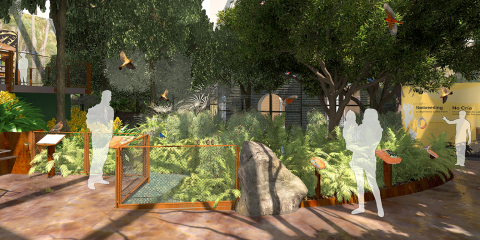
New Zoo Exhibit: Experience Migration Preview and Update ›
As part of our community, we'd like to invite you to visit the Zoo's bird plateau to learn more about Experience Migration.
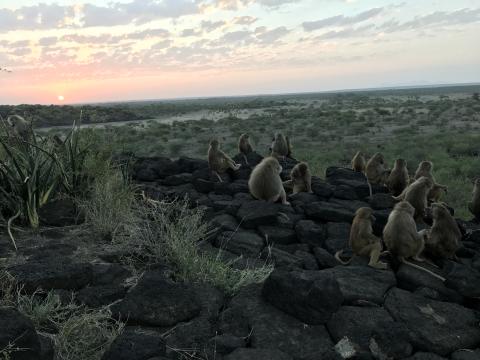
Science Snapshot: Studying Baboons in Ethiopia ›
For the past two years, Global Health Program veterinarian Dawn Zimmerman traveled to Awash National Park in Ethiopia to collar hamadryas baboons, helping researchers track the primates and study their biology, reproduction and social nature.
Dama Gazelle Calf Born at the Smithsonian’s National Zoo ›
Just one month after welcoming a male Dama gazelle calf, Cheetah Conservation Station keepers at the Smithsonian’s National Zoo once again welcomed a new member to the herd. A female calf was born in an off-exhibit enclosure the morning of Oct. 9 to 9-year-old mother Fahima and 4-year-old father...

Giant Panda Bei Bei Pumpkin Carving Stencil ›
Carve your Halloween pumpkin to look like giant panda Bei Bei today with this downloadable stencil!
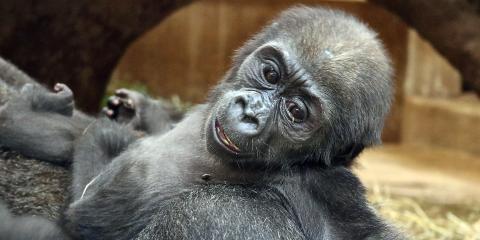
#GorillaStory: Moke at Six Months Old ›
Moke is six months old and, for the first time, keepers observed him taking his first steps in the outdoor yard independent of his mother!

Armadillo Pup Update: September 2018 ›
Watch a video and read the latest update on the screaming hairy armadillo pup born Aug. 8, 2018.

NextGen Science: Tracking Endangered Species ›
As part of the Explorations in Engineering program at Foxcroft School in Middleburg, Virginia, students had a rare opportunity to help Smithsonian scientists save two critically endangered species: pangolins and scimitar-horned oryx.
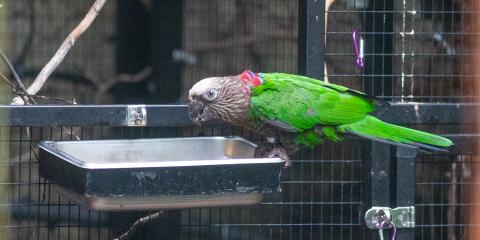
New at the Zoo: Hawk-Headed Parrot ›
Get to know the Zoo's hawk-headed parrot, Boomer, in this Q&A with animal keeper Hilary Colton.
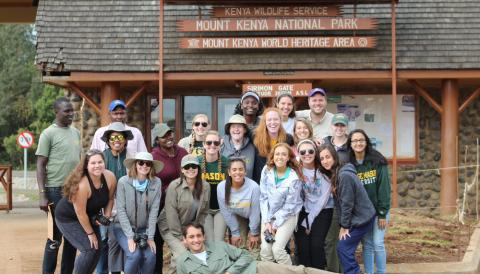
Science Snapshot: Field Trip to Kenya ›
George Mason University students recently traveled to the Mpala Research Centre in Kenya to work with Smithsonian scientists as part of a course on emerging infectious disease.
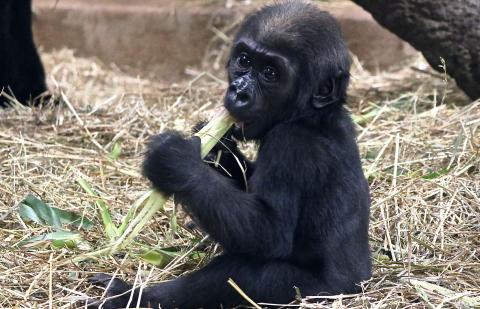
#GorillaStory: ‘Big Boy’ Moke ›
Read primate keeper Melba Brown's latest update on 5-month-old gorilla Moke.
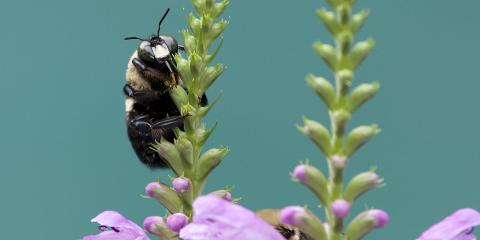
7 Things You Should Know about Bees and Other Pollinators ›
What are pollinators, and why do we need them? Read on to find out why pollinators are so important!
Three Cheetah Cubs Born at the Smithsonian Conservation Biology Institute ›
The Smithsonian Conservation Biology Institute (SCBI) welcomed a litter of three cheetah cubs Sept. 22. The cubs were born to first-time mother, Sukiri.
Elderly White-Cheeked Gibbon Dies at the Smithsonian’s National Zoo ›
Primate keepers at the Smithsonian’s National Zoo are mourning the loss of Muneca, a white-cheeked gibbon who was humanely euthanized this morning.
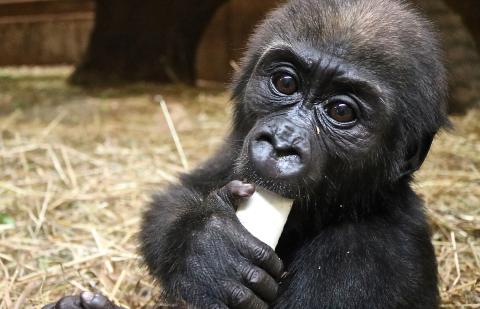
#GorillaStory: Moke and Baraka ›
Five-month-old western lowland gorilla, Moke, has been spending some quality time with his father, says primate keeper Melba Brown.
Smithsonian’s National Zoo and Conservation Biology Institute Receives Accreditation From Association of Zoos and Aquariums ›
The Smithsonian’s National Zoo and Conservation Biology Institute has been awarded a five-year accreditation from the Association of Zoos and Aquariums. The accreditation certifies that the Zoo has met or exceeded the AZA’s standards for animal care, veterinary programs, conservation, education and...
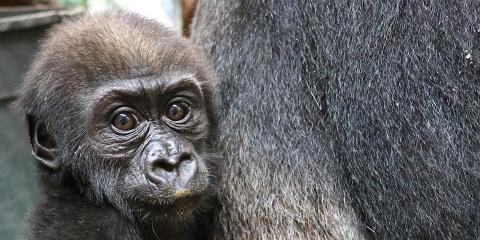
#GorillaStory: Getting to Know Moke ›
Friends of the National Zoo volunteers are helping primate keepers monitor how our western lowland gorillas interact with one another, says primate keeper Melba Brown.
THE BUZZ–Me and the Bee Playground Now Open at Smithsonian’s National Zoo ›
The Smithsonian’s National Zoo is buzzing over a new pollinator-themed playground: Me and the Bee, sponsored by Land O’Lakes Inc. Adjacent to the Kids’ Farm and Conservation Pavilion, Me and the Bee encompasses 4,900 square feet of space where children of all ages can climb atop honeycomb steps...
Steven Monfort Named Director of the Smithsonian’s National Zoo and Conservation Biology Institute ›
Steven Monfort has been named the John and Adrienne Mars Director, Smithsonian’s National Zoo and Conservation Biology Institute, effective Sept. 17.
Pollinator Public Art Initiative Takes Flight at the Smithsonian’s National Zoo ›
The façade of the Great Ape House is getting a “bee-autiful” makeover. Beginning Sept. 17, artist Matthew Willey will put paint to the popular primate exhibit, creating a larger-than-life swarm of honeybees to highlight the importance of pollinator conservation.

#GorillaStory: Playtime for Moke ›
Moke is 5 months old! Check out primate keeper Melba Brown's latest update on our western lowland gorillas.
Dama Gazelle Calf Born at the Smithsonian’s National Zoo ›
Cheetah Conservation Station keepers are celebrating the birth of a critically endangered Dama gazelle.
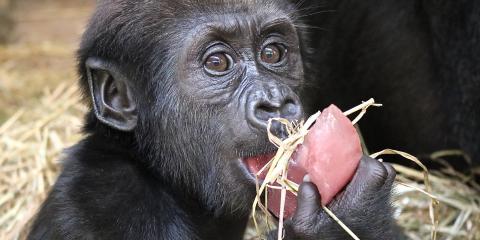
#GorillaStory: School Starts for Moke ›
Western lowland gorilla Moke celebrated his mom's birthday and is learning through play, says primate keeper Melba Brown.
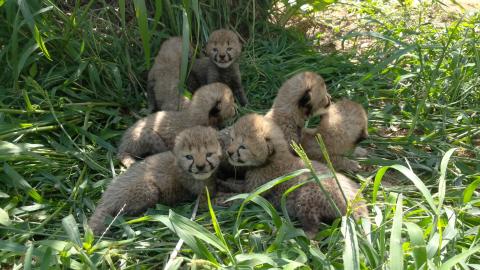
Seven Cheetah Cubs Are Healthy and Growing ›
The Smithsonian Conservation Biology Institute's seven cubs are thriving! They received a clean bill of health at their first veterinary exam.